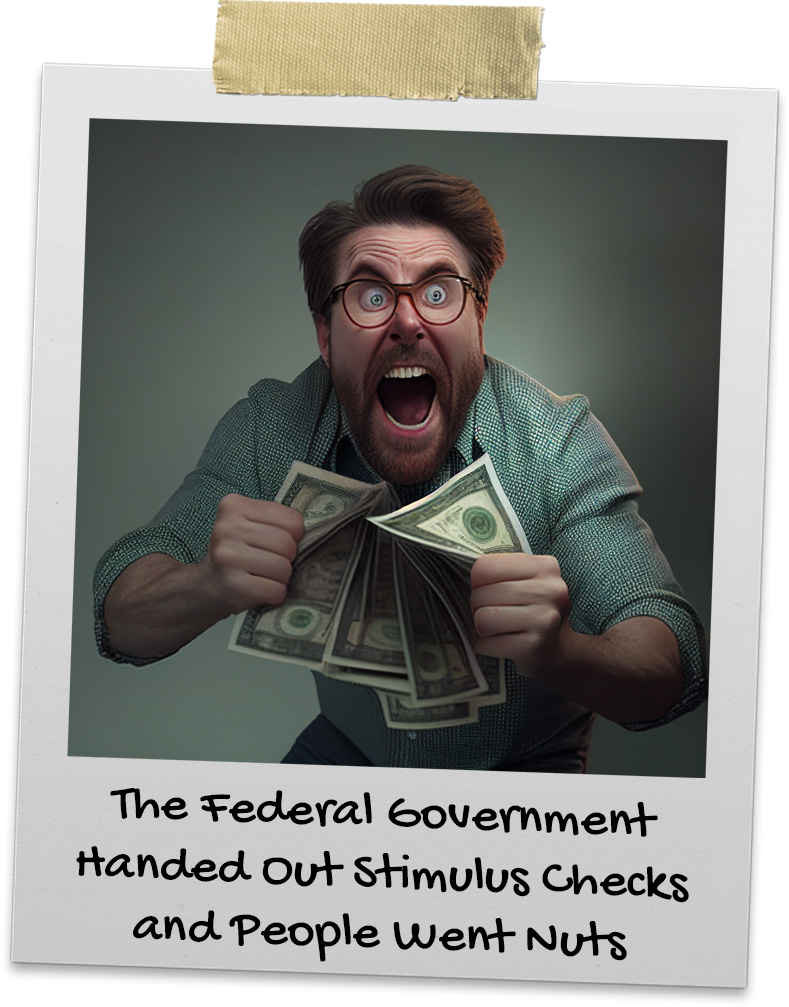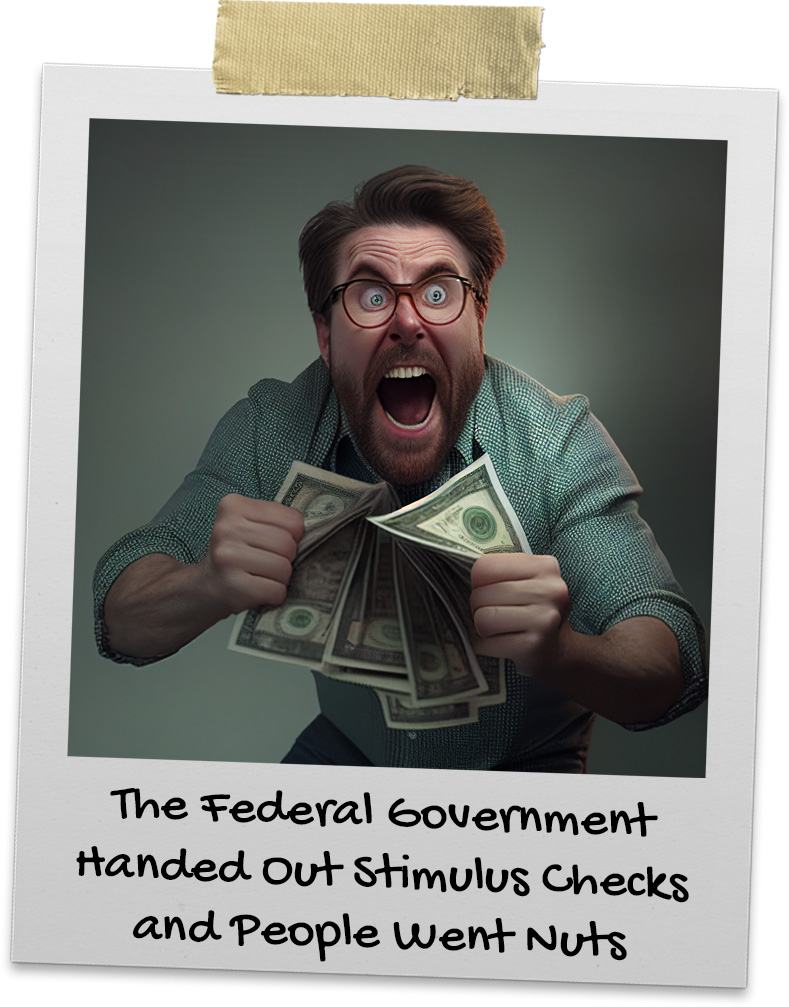The Government Handed Out Stimulus Checks and People Went Nuts


In late March 2020, Congress passed the $2 trillion Coronavirus Aid, Relief, and Economic Security (CARES) Act, which provided $1,200 to individuals and $2,400 to married couples, with an additional $500 per child. It was followed by two more installments of pandemic relief being passed, later in 2020 and then again in 2021.
In fact, the government sent out around 472 million stimulus payments. Collectively, these payments had a total value of around $803 billion. Eligibility was phased out for those earning above certain thresholds. If the idea was to help people get some money pumping into the economy, it worked. People eagerly spent the money, like it was on fire.
On average, Americans spent roughly 1/3 of their first checks within 10 days of receiving it. For some, the money was to cover the essentials, catching up on rent and bills that had gone past due, as well as groceries. In April, the unemployment rate went up to 14.7 percent, and people struggled to make ends meet without an income.
Others used it to pay off debt or to make repairs to their homes or set up home offices. Some people used the stimulus money to make big purchases, such as new automobiles or RVs. People also used the stimulus money to support local businesses by buying gift cards or making other purchases. Some restaurants saw their sales go up 300% or higher the week that the first checks were sent out. Others used it to invest in the stock market or to put money into savings. Broker Charles Schwab opened 609,000 new accounts in Q1, and Robinhood, a popular trading app with younger people, saw its daily trades in March jump up 300% from 2019. With all the new buyer demand, the market jumped 35% from end of March to May.
While the stimulus program was widely credited with providing much-needed financial assistance to many Americans during a difficult time, criticisms of the program were made that the amount was not enough and some needier people should have received more. Others thought that it was an irresponsible mismanagement of money that was bound to lead to high levels of inflation, which it did. When people on both sides of the aisle get upset, it usually means that the program was either very good, or very bad. We will have to wait to find out if there are lasting implications to our economy.



